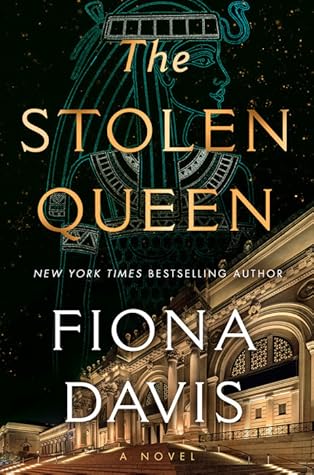More on this book
Community
Kindle Notes & Highlights
Amelia Edwards’s marvelous account of her 1874 travels, A Thousand Miles up the Nile.
Clothes protected; clothes were armor. Clothes were a distraction when things got difficult.
“What’s the point of even bothering,” whined Leon, “only to have the antiquities end up in the Egyptian Museum? They might as well toss them into the trash.” “How so?” asked Charlotte. “The museum isn’t well-run,” explained Henry. “There’s not much money, which means the works don’t get the treatment they deserve.” “It’ll end up covered in as much dust as when it was in the tomb,” added Leon.
That night, she dreamed of the mummies wandering around the tomb, bemoaning the loss of the necklace in the darkness of their burial chamber. Who had these women loved in their lifetimes? What had they accomplished? Why were they forgotten?
Her work was grounded in the past, and it was refreshing to get a sense of the future, of forward movement.
As she’d walked, she tried to figure out what Mark was thinking by proposing to her now, after so long together. They often joked about having a “European partnership,” with no need to sanctify their love for each other in a church or some kind of ceremony in front of friends. What was the point? Charlotte had done it once and vowed never to again. Everything could change in a minute, even if you were careful. The fact that he was even considering such an act made Charlotte wonder if she’d read him all wrong.
“Charlotte, sometimes I have no idea what you’re thinking and it scares me.”
Part of her wanted to pull him to her, tell him that he was the man of her dreams and they didn’t need a ring to prove that. But the moment she considered the possibility, it was as if a deadbolt slid over her heart, pinning it deep inside her chest. Instead, she reassured him with hollow words. That they were fine, that they’d be fine. It was the best she could do.
Amelia Edwards’s memoir of Egypt, comparing the descriptions of the temples and landmarks from sixty years ago to Charlotte’s real-life encounters with them.
That was the fun of exploring the Met: stumbling upon surprises that made you realize how small your problems were in the grand scheme of things, how many centuries the human race had been in existence. She found it reassuring.
Fashion is part of the daily air; you can see the approach of a revolution in clothes.”
“You seem like a quiet type to me,” said Billy. “Or maybe that’s because I take up all the oxygen in the room.”
“I’ve always appreciated women who were interesting rather than beautiful. Probably to prove my mother wrong. You don’t need beauty, but you must have style. Embrace what you have, I say.
With that, she began to sob. Whatever happened in a week or a month or a year was out of her control,
The city was infused with her past, the way a lover’s scent lingers on a pillow.
“It’s something of a shambles, the Egyptian Museum. To be honest, they’d be much better off at the Met. At least we have electricity, we can keep the temperature and humidity stable and ensure they don’t get damaged.”
“Within the silent green-cool groves of an inner world where, alone and free, you may dream the possible dream: that the wondrous is real, because that is how you feel it to be, that is how you wish it to be. And how you wish it into being.”
Much of Charlotte’s early experiences in Egypt are inspired by the famed female French archaeologist Christiane Desroches-Noblecourt, who is the subject of a terrific biography by Lynne Olson, Empress of the Nile: The Daredevil Archaeologist Who Saved Egypt’s Ancient Temples from Destruction.


